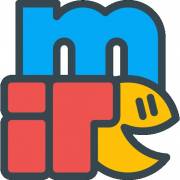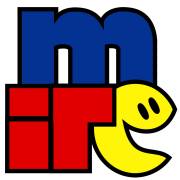Introduction to IRC
By, Akurei
January 17th, 2001
- I. Introduction
- II. MIRC
- III. BitchX
- IV. Common IRC Commands
- V. Ircops
- VI. Services
- VII. Contact etc.
I. Introduction
IRC (Internet Relay Chat) is one of the most used chat software on the internet.
IRC's users are probably just about the same as the amount of users that use America Online (AOL) IRC is alot more "interactive" than most other chat software in many ways. For example, in what aol chat can you kick someone out of a chan when they are harassing you? You cant! In irc... you can do this. Also, with irc you can run you can pick the chat client you use, whereas with aol and other software used for chat you must pick the single one provided. The two most used chat clients for irc is mirc (http://www.mirc.com) and BitchX (http://www.bitchx.com).
MIRC is only for windows 9x and BitchX is used for most unix operating systems.
Unfortunately, I have never seen an irc client for Macintosh... so if you have a mac... this text really is not for you.
II. MIRC
MIRC is a very good chat client. It's more of the point and click type of chat client whereas BitchX is a text based chat client. In mirc, one of the very nice features is that you can easily create your own script in minutes to do whatever you would like. To get to the script editor in mirc, you usually press the icon at the top with the two red circles. Although most of the information here is provided within the mirc help files, I figured I would try to make it a little easier for those of you who are too lazy to learn something as easy as this. I also had alot of people ask me questions on the topic of "how do I use mirc" so next time they ask I figure ill give them a copy of the text.
III. BitchX
BitchX is an irc client used by most unix systems. With linux, it usually comes with the distrobution and on the installation of the distrobution you can manually decide whether to install it or not. It's very small so most distrobutions of linux install it by default. This client is mainly text based... And alot of people do not like that so they go with mirc.
Personally, I like BitchX better because of how "clean" it is. It isn't as "jumbled" as mirc (example: Icons EVERYWHERE). But, if you are looking for a gui (graphical user interface) irc client for unix systems, there is always XChat (www.XChat.org) which resembles mirc in many ways. Unlike MIRC, BitchX has only one window. To change the room you are speaking is, you have to type /channel #channelname instead of clicking the channel you want to speak in at the top of the mirc client. Also, BitchX is absolutely free! Mirc has only a shareware liscense (which means you can only use it for a small amount of time before you are SUPPOSED to pay the money to the programmers that made mirc. Although, 99% of the people that use mirc do not pay and continue using mirc. BitchX is also a SCRIPT. With this script, you can easily edit whatever features you want in BitchX... changing the whole program! Mirc is an executable, you cannot modify an executable file.
IV. Common IRC Commands
When I use <> that means you have to put something in there. After every command, i will provide an example of that command.
Also, when i use the semicolon, ;,it means that im just noting something out for you and it is not actually a command. When i use the pound, #, I am saying what the command does.
/server <host address>
/server irc.dugnet.net
# Connects you to an irc server that you will chat on.
; You must connect to a server to chat.
/join #<channel>
/join #hackers
# Joins a channel that you will chat on.
; All channels must have # in front of them.
/nick <nick>
/nick CrazyGuy
# You are known by your nick, when people chat to you, they will call
# you CrazyGuy, or whatever you asign your nick as.
/invite #<channel> <nick>
/invite #hacking CrazyGuy
# This command invites CrazyGuy to the channel #hacking.
/dns <nick>
/dns CrazyGuy
# This command will preform a dns on the targeted user.
/disconnect
# Disconnects you from the server you are currently on.
/msg <nick> <message>
/msg CrazyGuy Hey, whats up
# This will message crazy in a query box "Hey, whats up"
/query <nick>
/query CrazyGuy
# This will bring up a window to where you can chat with CrazyGuy only.
/whois <nick>
/whois CrazyGuy
# When you do the whois command, it gives you information about the
# person you are whoising. Such as the modes they are using (if they
# are +o, they are an ircop (i will talk about ircops later, but they
# basically control the irc server you are using)). It tells you what
# irc server they are using on the irc network you are on. It gives
# you their host name, and a few other things.
/me <action>
/me looks around
# This command is just for fun... the example output would be... CrazyGuy
# looks around.
/lusers
# Tells you how many users are on the network, the server, and how many
# ircops are on the server.
/motd
# Motd means "Message Of The Day.
# Server administrators (the people who actually RUN the server) sets
# the motd. To view it, you use the /motd command. The motd just
# tells you about the server... tells you the name of the network
# maybe even the version of the ircd the server is running
; IRCD means Irc daemon. All networks run irc daemons which allows
; you to chat to other people on the network.
/mode #<channel> <mode>
/mode #hackers +S
# To set channel modes, you must be an operator in the channel.
# Another words, you must have a @ by your nick (if you are using
# mirc, all you have to do is look to the left of the screen and
# see the nicks and the symbols by them). Halfop (which is only
# used on some servers (for example irc.dugnet.net)) can also
# set some channel modes. They can change the topic in the
# channel, they can change the number of users the channel
# can hold and much more.
Some channel modes :
/mode #<channel> +o <nick>
# This mode gives a user operator (op)
# An operator has full control of the channel.
/mode #<channel> +h <nick>
# This mode gives a user half operator (hop)
# Halfop can only do some of the things that the op does.
/mode #<channel> +v <nick>
# This mode gives a user voice. When a channel operator sets a channel
# as +m (moderated) then users cannot talk unless they have voice,
# half op, or op. Channels are usually not set to +m so voice usually
# just means "yer cool".
/mode #<channel> -o <nick>
# Takes the persons op away (deop)
/mode #<channel> -h <nick>
# Takes the persons hop away (dehop)
/mode #<channel> -v <nick>
# Takes the persons voice away
/topic #<channel> <topic>
# This command can only be used by hop and op... It just changes the
# topic of the chan that you are op in.
/mode #<channel> +S
# This mode sets the channel as colorless, another words, noone
# can use colors in the channel you are in.
/mode #<channel> +i
# This mode makes it to where you have to invite someone so they
# can enter your channel.
V. Ircops
An ircop is basically the watchdog of the server you are using.
He kindve patrols the halls and doesn't let anyone break the server rules (which can be seen when you type ./motd). Ircops can kick people off of the server, ban them from the server, and even change the hosts they are using. Local Ircop is an ircop that can only kill, ban, and change hosts of people on their own server. Global Ircops can do it on any server. Service Administrators can make people join channels, change peoples nicks, get people's ircop password, and much more. Network Administrators help run the network and Tech Administrators actually installed and run the network.
Ircop commands :
/kill <nick>
/kill CrazyGuy
# This command would kick the user that you want off of the network.
/kline <HostOrNick> <Time> <Reason>
/kline CrazyGuy 9999 Being mean to people
# The kline command bans people from the server that person is using
# at that time.
/gline <HostOrNick> <Time> <Reason>
/gline CrazyGuy 9999 Being mean to people
# The gline command bans the people from the whole network (every server!).
/sethost <host>
/sethost i.am.ircop.on.this.network
# This command creates a virtual host for you if you are an ircop.
/chghost <nick> <host>
/chghost CrazyGuy i.am.a.lame.person
# This creates a vhost for CrazyGuy, when you whois him, you will see the vhost.
/getpass <nick>
/getpass CrazyGuy
# This command gets the password of someones nickname from nickserv.
; Only Service Administrators and higher can perform this command.
/getpass #<channel>
/getpass #hacking
# This command gets the password of someones channel from chanserv.
; Only Service Administrators and higher can perform this command.
VI. Services
Services such are chanserv and nickserv are widely used on irc networks.
The server I am ircop on, irc.dugnet.net uses these services as well as many others. Including operserv, memoserv, X, and a few more i believe. Services are very good for servers. Services can provide a variety of different features to your users. For instance, if you do not have a chanserv to give operator to the person that owns the channel, and anyone can get operator when they join the channel you own, someone can easily steal the channel from you by deoping everyone and then kicking you!
Some common chanserv commands :
; All of these commands are used in irc.dugnet.net
/msg chanserv info #<channel>
# This command gives you information the channel you request information
# from. For example, who founded (or registered) the channel.
/msg chanserv register #<channel> <password> <DescriptionOfTheChannel>
# Registers a channel so noone else can get op in it unless you want them to.
; You must be operator in the channel you are registering to register it.
/msg chanserv access #<channel> <add,del,list> <user> <level>
# Adds a user to the channels access list.
; level 1 is a normal user, no voice or anything.
; level 2 adds a user to the list, that means he can enter a channel when it
; is invite only (+i) without being invited.
; level 3 is auto voice, this means he can do everything level 2 can do
; and he also gets voice everytime he enters the channel.
; level 4 is auto halfop which means he can do everything the previous
; levels can do but he can also get halfop everytime he joins the channel.
; level 5 is auto op which means he gots op everytime he enters the channel
; as well as getting whatever 2,3, and 4 gets.
/msg chanserv identify #<channel> <password>
# Sometimes you must identify to chanserv to show that you are the owner of
# a channel so you can use certain options.
/msg chanserv drop #<channel>
# This drops the channel so it is no longer yours. You must be identified
# with chanserv to use this command.
Some common nickserv commands :
/msg nickserv register <password> <email>
# This registers the nick you are on for you.
; You cannot be added to channels access lists unless you are registered.
/msg nickserv identify <password>
# This command lets you use the nick you are on. For example, if the last
# time you were on irc, you registered a nick, and then, you disconnect and
# the day after you get back on irc, nickserv will require you to enter your
# nick password or you will be kicked off of your nick (your nick will be
# changed to "Guest". This is so noone gets on your nick or steals it.
VII. Contact etc.
I hope you enjoyed the text and maybe even learned something from it...
I had like five people ask me to "teach" them how to use/about irc so
I just figured that I'd do this instead.
http://www.securityfocus.com Good security site
http://www.wuli.nu Free email
http://www.dugnet.net Dugnet's website
If you would like to contact me, im on the server irc.dugnet.net in the channel #phreaking and my email address is khaos311@hotmail.com ... I take any requests on texts and im always happy about teaching people stuff.



















